We are currently experiencing internet and phone issues in some of our centres. For all enquiries, please contact mail@hearandsay.com.au.
Many share the common idea that occupational therapy and speech therapy are similar, as both professions focus on rehabilitation services. However, there are distinct differences between the scope of an occupational therapist and speech therapist. This article explains the role and scope as well as how occupational and speech therapy can benefit you.
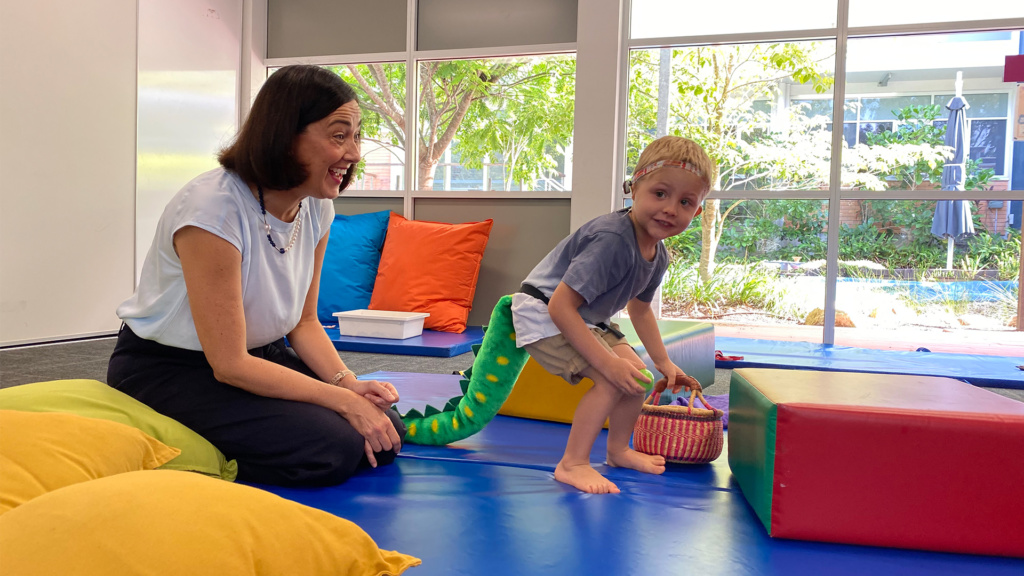
What is an occupational therapist?
Occupation therapy, also commonly known as OT, is a field that treats a patient from head to foot. The primary goal is to help patients feel more independent in the activities of everyday living, whether it’s eating food, getting out of bed, or going to the shops.
Occupational therapists use a range of exercises and adaptions to help individuals practice self-care and complete basic life skills that they might find challenging or overwhelming due to disability, injury or illness. Occupational therapists sometimes work closely with speech pathologists, particularly when working with a client who has hearing loss.
Occupational therapy and hearing loss
It’s common for children with hearing loss to experience sensory or motor difficulties because the vestibular system which is responsible for your sense of balance and movement, is located in the inner ear and may also be implicated when there is hearing loss. The vestibular system plays an important role in a child’s motor skill development including balance, core stability, muscle tone and coordination of both sides of the body.
At Hear and Say, an occupational therapist will work with our team of speech pathologists and audiologists to holistically monitor and support the development of children with hearing loss. They aim to identify potential issues as early as possible and then provide targeted strategies to help children thrive in their everyday settings.
Practice areas and expertise
Occupational therapists work with people who might be impacted by the below:
- Aging
- Injury or illness
- Autism
- Difficulties with fine and gross motor skills
- Developmental delay
- Intellectual disability
- Physical disability
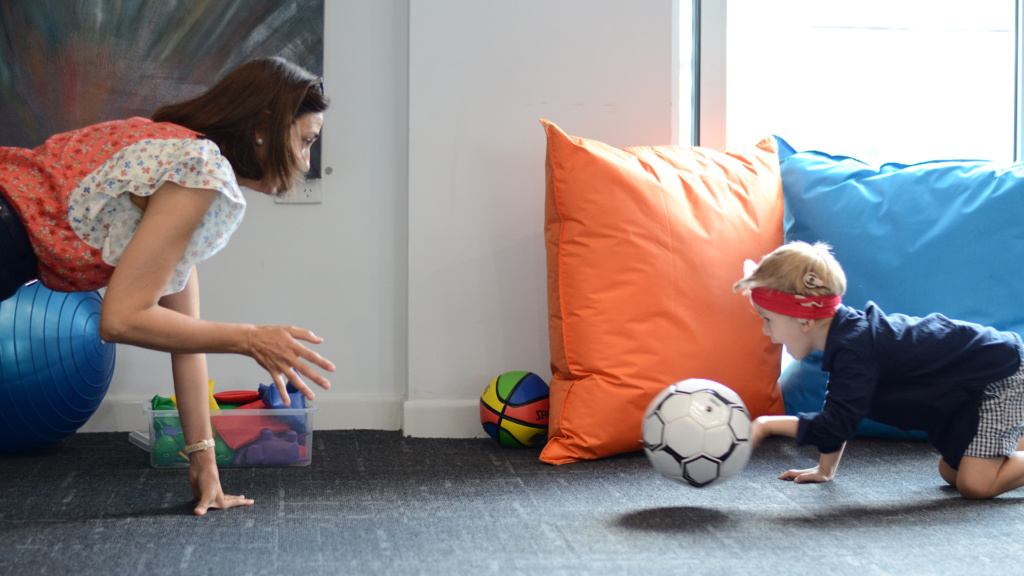
Occupational therapists practice in a number of areas including:
- Acute care therapy: working directly with patients in hospital who require immediate treatment plans after experiencing a high-risk surgery or traumatic injury.
- Acute rehabilitation therapy: intense rehabilitation therapy where patients are required to stay for an extended period of time and attend daily sessions.
- Subacute care therapy: people that are currently not in hospital but still require intense therapy. Occupational therapists will typically work with patients three to five times during a week.
- School environments: an Occupational therapists works independently in a classroom helping students with learning difficulties and social participation.
- Assistive technology: occupational therapists determine the technology needed to help patients complete daily tasks with little to no assistance.
- Home care: therapy sessions delivered within the patients home.
- Private practice: sessions are booked via appointments and treatment is based on the patients particular needs.
- Teach life skills: an occupational therapist explores many aspects that assist the patient in developing various life skills. This can include supporting appropriate positioning for eating and swallowing, this might include aids such as adapted utensils.
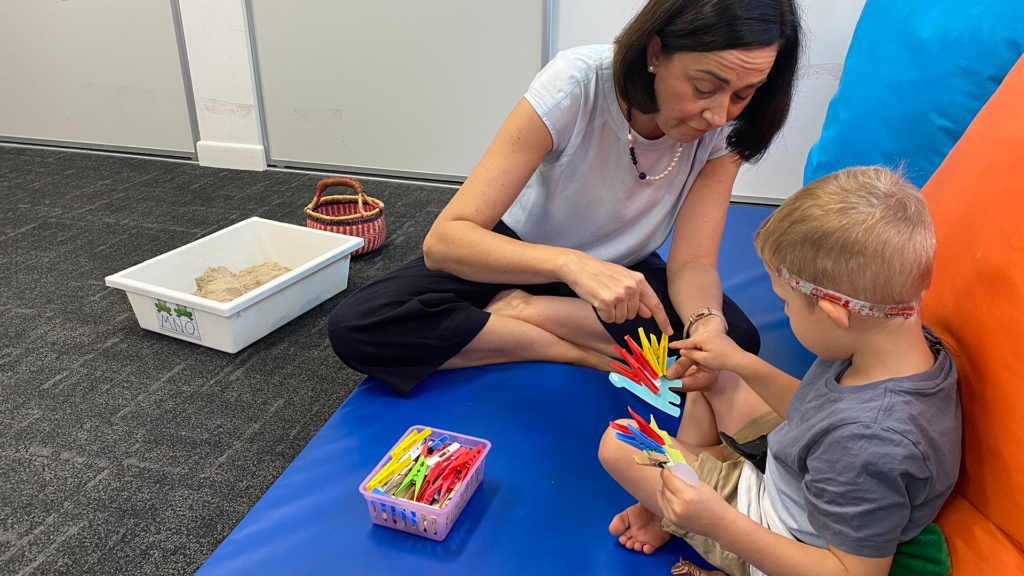
Education and qualifications
In order to practice, occupational therapists must obtain the following qualifications:
- An undergraduate or master’s degree in occupational therapy
- Be recognised and meet the national regulation requirements set by the Occupational Therapy Board of Australia for the Australian Health Practitioners Regulation Agency
Benefits of occupational therapy
The main focus of occupational therapy is to support independence, safety and meaningful engagement in daily tasks. These tasks are inclusive of self-care, productivity and leisure activities. When working with children, the aim of occupational therapy is to get the child to be able to participate in their activities of daily living and play the same as their siblings and peers.
A parent might consider coming to an occupational therapist if they’ve notice that their child has been slower to reach some of their gross and fine motor milestones. For example, their child may be taking longer to learn how to crawl, walk, jump or climb on playground equipment. They may also notice that their child has difficulty using their hands for play and self-care activities such as holding cutlery at mealtimes, holding a pencil for drawing and writing activities or learning to cut with scissors.
Alternatively, they might be concerned about their child’s ability to settle and focus on play and early learning activities. Children need to be able to control their bodies so that they can sit stably to attend and listen. They also need to be able to screen sensory input so that they can focus on what is relevant in a particular situation.
What is a speech pathologist?
Speech pathologists, also commonly known as speech therapists, assist people with speech and language challenges. Speech therapist’s overall goal is to help patients communicate more effectively.
Practice areas and expertise
Speech pathologists support people with:
- Articulation
- Speech motor planning
- Oral motor skills
- Swallowing
- Language development
- Developmental delays
- Learning disabilities
- Traumatic brain injury
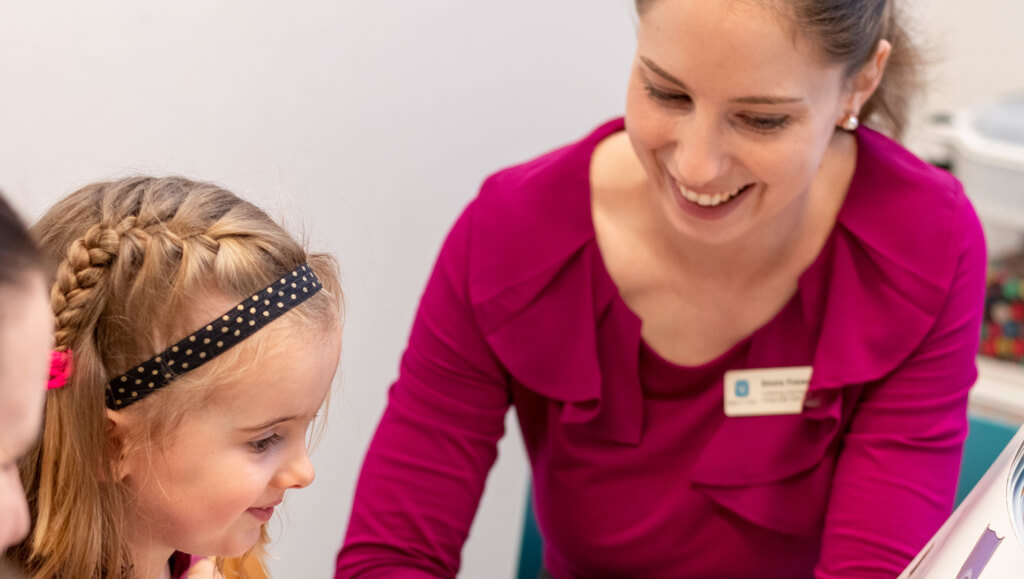
Education and qualifications
In order to practice speech pathology, an individual must obtain the following:
- An undergraduate or master's doctorate degree in speech pathology
- Be recognised as a member of the professions governing body, Speech Pathology Australia
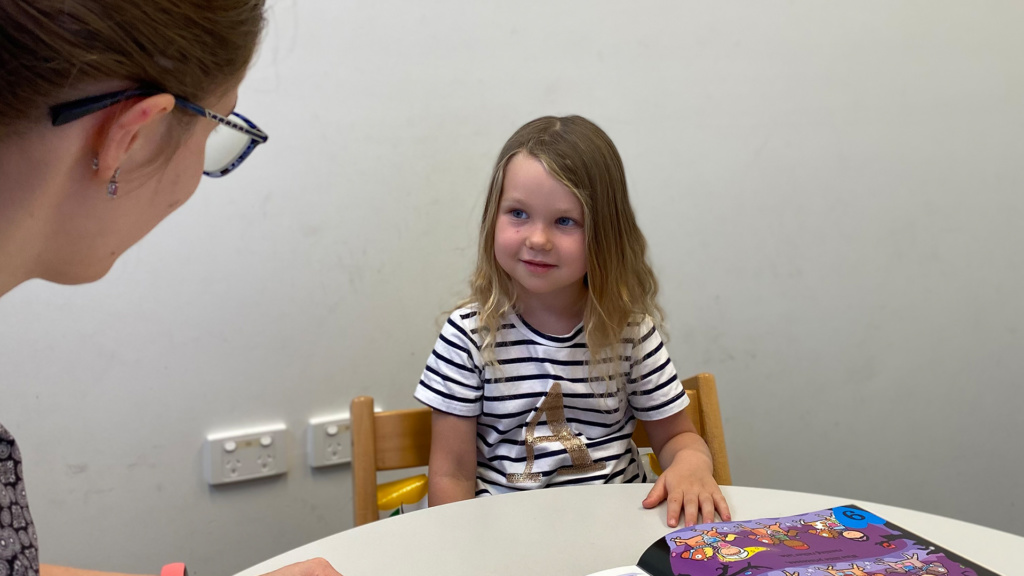
Listening and Spoken Language Specialist certification
Hear and Say has many listening and spoken language specialist who have undergone specific training to work with people impacted by hearing loss. In addition to the above, they have completed the below to achieve the Listening and Spoken Language Specialist certification:
- 900 hours of professional experience
- 80 hours of professional development
- 20 hours of mentored sessions
- Pass the final exam
Benefits of speech therapy
Speech pathologists can be helpful to all ages, whether it's the ability to speak more clearly or understand one's feelings and thoughts. Mastering these skills also increases self-esteem and independence for people with speech and language disorders.
Speech therapy for children
Every family hopes their child will meet all their developmental milestones. It can become worrying when their child does not seem to be on track with the development of their communication skills, from first words, to articulating phrases to language comprehension.
It can also be extremely frustrating for the child who is desperately trying to express themselves when they have something to say. Thankfully, speech therapists are an invaluable resource when it comes to supporting a child’s speech, language and communication skill set.
Speech therapy for children with hearing loss
For children with hearing loss who use hearing technology like hearing aids, learning to hear and speak takes a lot of work and additional support. At Hear and Say our speech pathologists specialise in working with children impacted by hearing loss. They work closely with paediatric audiologists and occupational therapists to help the child reach their language goals. Speech therapists tailor each lesson to the individual to give babies and children the critical skills they needed to hear and speak just like others around them. Lessons often involve lots of play-based learning, including games and reading.
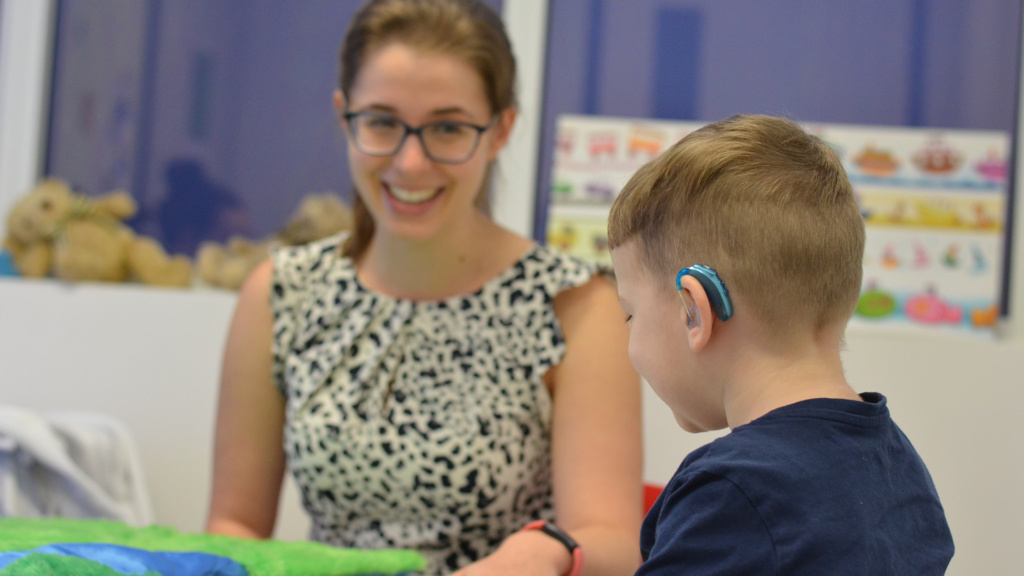
Similarities between occupational therapy and speech therapy
While these careers are different from one another, they both share a common goal of aiming to improve patients’ lives. Occupational therapists and speech therapists career paths align in the following ways:
- Evaluation: Evaluating patients for issues and disorders is a key responsibility for occupational therapy and speech pathologists.
- Treatment Plans: Both occupational therapists and speech pathologists must use what they have learned from evaluating their patient's ability along with their medical history to create tailored treatment plans. Both professions are highly evidence and research based.
- Family Education: Most therapy patients have disabilities that require a collaborative approach with their families to continue treatment outside of sessions. Speech Pathologists and occupational therapists both have to educate families on injuries and disorders. This includes what families can do to help patients benefit from therapy as much as possible and develop critical life skills.
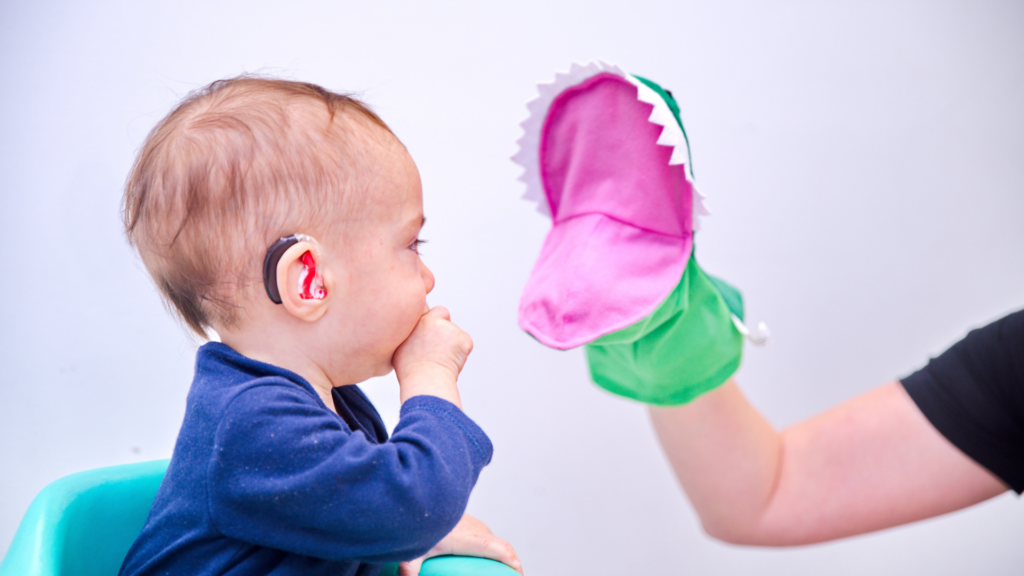
Differences between occupational therapy and speech therapy
While both professions work in similar settings and some treatments may overlap, there are some main differences between occupational therapy and speech therapy including:
- A therapeutic focus: Speech pathology is primarily focused on issues and dyabilities surrounding communication. Whereas, Occupational therapy is focused on the big-picture perspective, analysing the individual’s problems as intertwining issues and developing relevant treatment to cater for that.
- Different required education and training: While the training for both occupational therapy and speech therapy is similar there is different education and training required.
The team at Hear and Say is here to help work out which option is best for you.
Get in touchHearing aids and cochlear implants are both excellent hearing solutions for people who are deaf or with residual hearing.
The best type of device will differ from person to person and should take into consideration the advice of their medical specialists, speech pathologist, audiologist, hearing assessment or hearing test results and the needs of the individual.
A cochlear implant can help someone who is deaf to hear by doing some of the function of the inner ear, electrical signals deliver sound and stimulate the auditory nerve. Comparatively, hearing aids amplify sounds to assist with hearing.
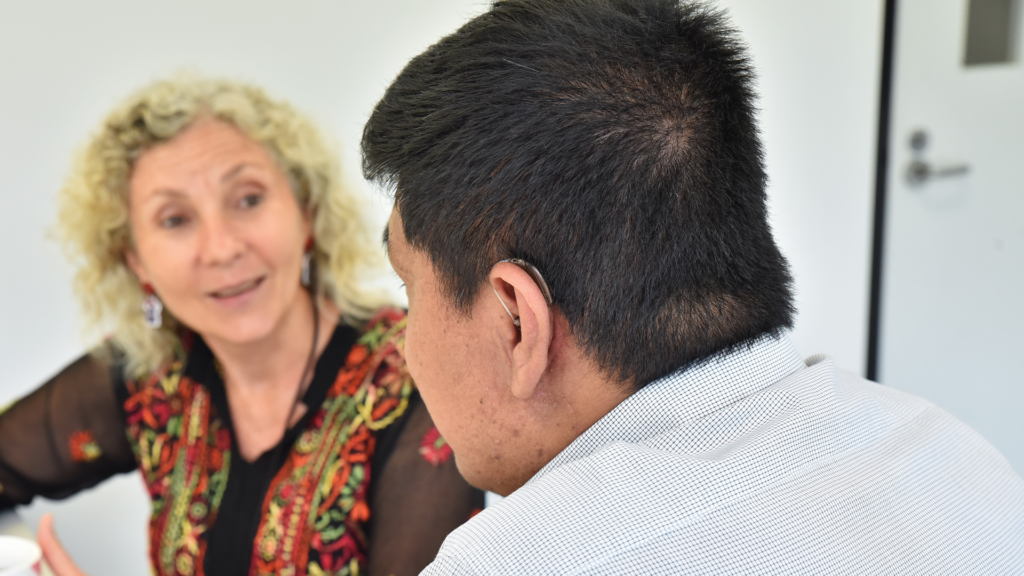
What are hearing aids?
Hearing aids are small wearable electronic devices that amplify sound to assist people with hearing impairment or hearing loss.
Hearing aids are a good option for people with mild, moderate or moderately severe hearing loss. These small external devices either sit behind the ear or in the ear. Using technology like hearing aids often improves quality of life as it allows the user to better socialise and connect with their friends and family.
Hearing aids are battery powered, they amplify sounds that are picked up using an inbuilt microphone, speaker and computer chip.
There are many different types of hearing aids, the best option will vary from person to person. An individual’s hearing loss or impairment, the advice of their hearing professional and personal style preferences will influence which hearing device is chosen.
Hearing aid style options include:
Behind the ear (BTE) hearing aids: the part of the device containing the battery and other features sits behind the ear and is connected to an ear fitting that sits inside the ear canal to transmit sound.
Receiver in the canal (RIC): this is smaller than a BTE device and has a thin, almost invisible wire that connects the hearing aid to the loudspeaker receiver that sits within the ear canal.
In the ear or in the canal (ITE/ITC): the ITE sits completely within the outer ear, while the ITC sits just inside the ear canal.
Completely in the canal (CIC) or invisible in the canal (IIC): these sit deeper in the ear canal, making them almost completely invisible, these are the most discrete option.
How hearing aids work
All hearing aids generally work in a similar way, they make sounds louder, improving the hearing of the user and ultimately increasing quality of life.
Hearing aids have a small microphone which converts sounds into an electronic signal.
Depending on the level of hearing loss of the user, the signal is then processed and modified by the device.
Lastly, the hearing aid contains a miniature loudspeaker called a receiver which sends the processed sound through the earfitting.
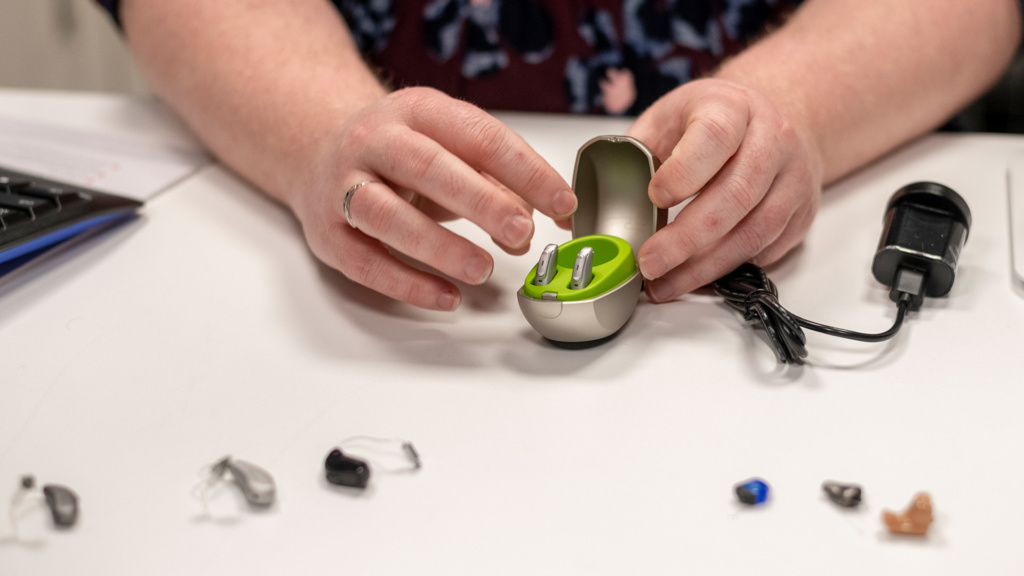
Pros and cons of hearing aids
Hearing aids are a good option for many people with hearing loss, allowing the user to control some aspects of the technology, including volume and device power status.
Hearing aids are a fantastic way to improve communication and reduce isolation.
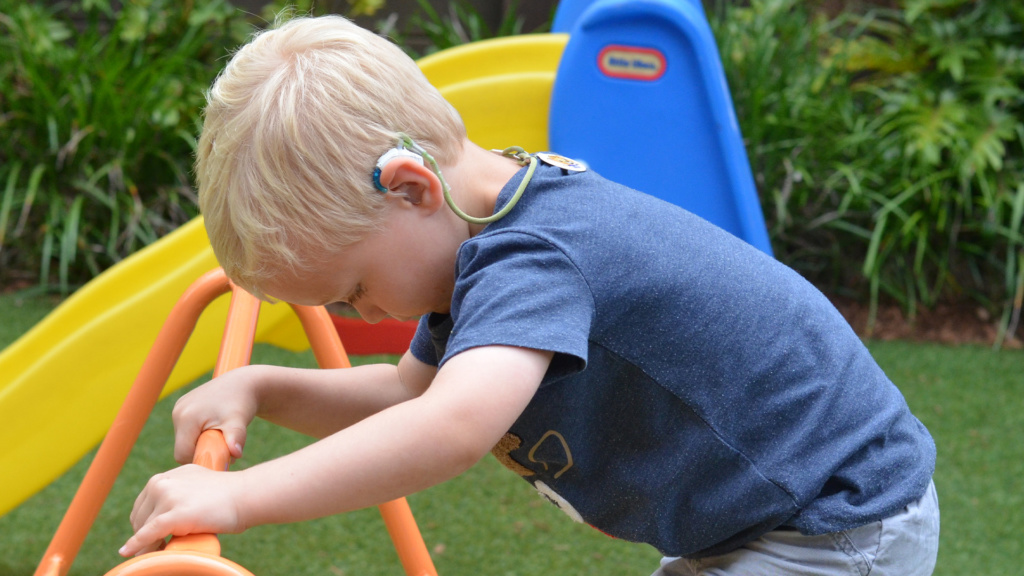
Benefits of hearing aids include:
- When worn consistently, hearing aids can help to reduce further hearing loss by keeping the brain’s auditory pathways stimulated
- Hearing aid style options including the receiver in canal, in the ear, completely in the canal, and invisible in the canal, offer improved customisation in terms of the fit in the ear, size of the device and how discretely they can be worn
- In comparison, the behind the ear models are larger in size, making them easier to handle – a good option for people with arthritis or vision impairment
- Behind the ear models can also last longer as the active components are sitting behind the ear which protects them from potential damage or harm from ear wax, etc. in the ear canal
- Many hearing aids can be equipped with rechargeable batteries
Some hearing aids can automatically adjust to the environment the user is in, while others can be adjusted via remote control or smart phone app to the specifications and at the convenience of the wearer.
Perceived Hearing aid cons include:
- Battery life on some devices can be challenging
- The visibility of the external device
- Challenges associated with fitting them in the ear for individuals with arthritis or impaired movement
- Risk of misplacing the device
- Risk of incurring technical difficulties in operating the device and settings
Please note that a lot of these downfalls can be overcome by talking to an audiologist who can tailor the device to your needs, should something go wrong Hear and Say is here to help.
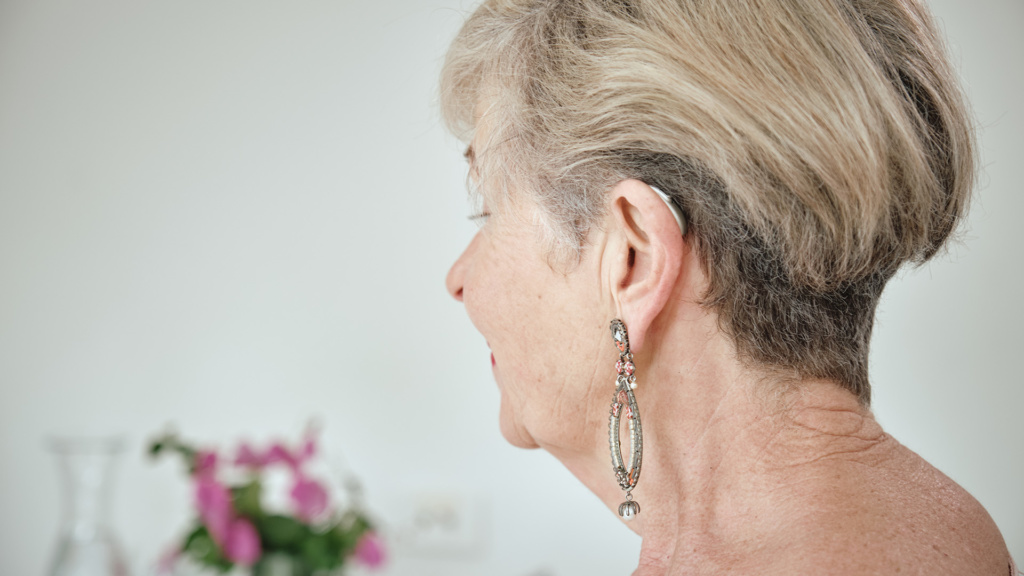
What are cochlear implants?
Cochlear implants are implantable devices that provide sound to a person with profound or severe hearing loss.
Cochlear implants are made up of two components, an implant is surgically placed under the skin to bypass the damaged portion of the hearing to stimulate the auditory nerve, and a sound processor that sits behind the ear. Cochlear implants are typically recommended when hearing aids are no longer enough as they enhance the clarity of sound and improve someone’s ability to understanding speech.
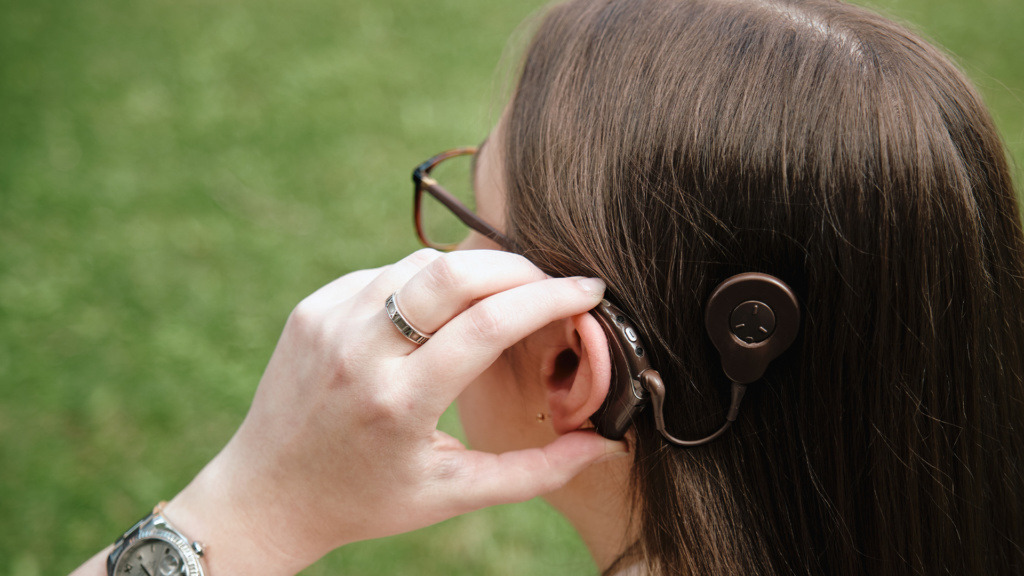
How cochlear implants work
Cochlear implants generate signals that are sent through the auditory nerve, directly to the brain, which then recognises the signal as sound.
The component of a cochlear implant which is surgically implanted consists of:
- A receiver stimulator to receive signals from the speech processor (which sits behind the hear) to convert them into electric impulses, and
- An electrode array which collects the electric impulses from the receiver/stimulator and sends them to different parts of the auditory nerve
It takes time to learn to hear with a cochlear implant as the brain has to learn or relearn how to identify sounds through this new device.
Pros and cons of cochlear implants
Cochlear implants are life-changing implantable devices for individuals with severe or profound hearing loss.
Benefits of cochlear implant include:
- For someone with severe or profound hearing loss, a cochlear implant can allow them to hear and understand speech again
- Cochlear implants enable the brain to take sounds from the external environment via the external processor, process this information, and create meaning of it, allowing someone to hear
- Babies born deaf receiving a cochlear implant early in life can learn to hear and speak just like their siblings and friends
- The ability to recognise speech like someone with typical hearing
- The ability to understand speech without relying on lip reading
- They assist with hearing environmental noise such as footsteps and traffic
- The ability to hear one’s own voice and control it
- Improved language skills as a result of hearing more
Some considerations and cons of cochlear implants include:
- They require a surgical procedure and extensive speech therapy to actively learn or relearn how to hear using the devices.
- Needing to remove the external component while bathing or swimming (however there are accessories that can be worn to make these devices waterproof)
- Recharging or changing batteries frequently
- Risk of accidental damage to the implant
- As a cochlear implant provides the ability to hear through stimulating the auditory nerve, a cochlear implant recipient may lose any residual hearing as a result of the surgery to receive the implant.
Despite some challenges, cochlear implants truly are an incredible device that allow someone who is deaf to hear. Always remember that the team at Hear and Say is here to help should you have any concerns or challenges.
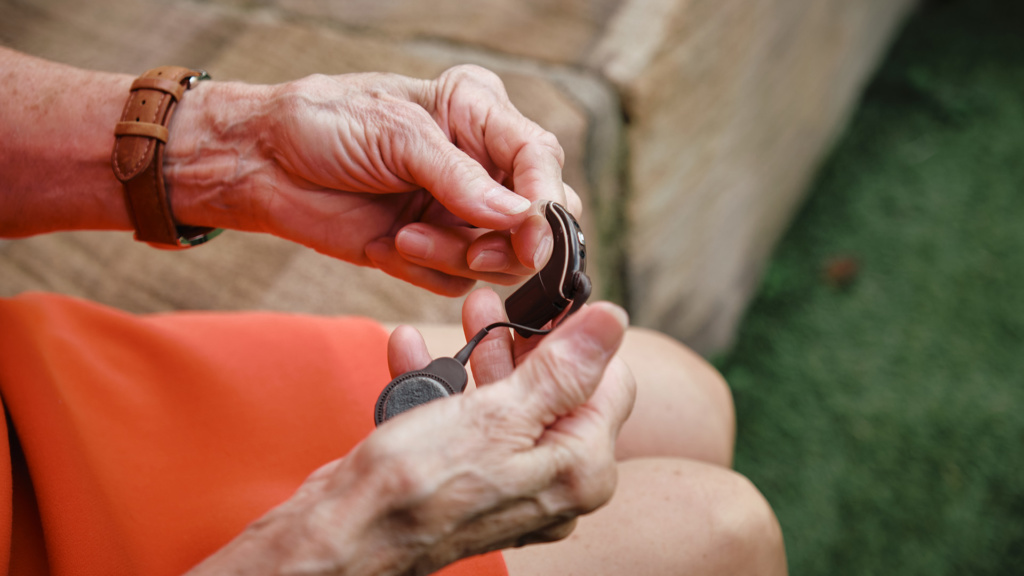
Similarities between hearing aids and cochlear implants
Both cochlear implants and hearing aids work to improve hearing and in turn increase quality of life.
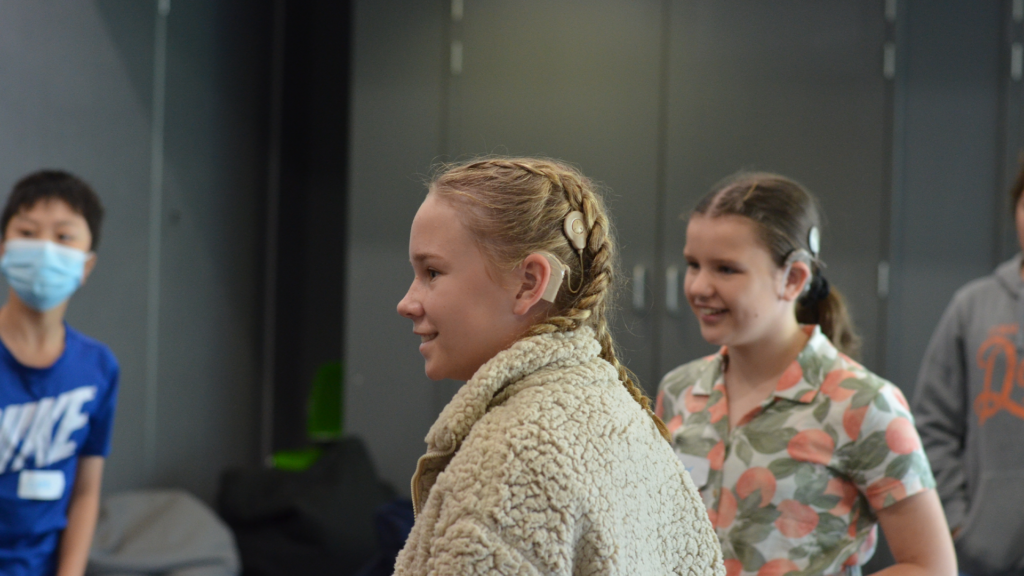
Differences between hearing aids and cochlear implants
Differences between cochlear implants and hearing aids include:
- Hearing aids make sounds louder
- Cochlear implants use electrodes to transmit sound signals which are converted into electrical impulses that can be interpreted by the brain
- Hearing aids are worn inside or behind the ear and are not surgically implanted like cochlear implants are
- Hearing aids are ideal for individuals with mild and moderate hearing loss. Cochlear implants are a good option for individuals with severe hearing loss.
Does my child need hearing aids or a cochlear implant?
Cochlear implants aren't suitable for everyone, so consideration and advice from a medical professional is required.
Cochlear implants are suitable for babies born deaf, children and adults who have severe hearing loss in one or both ears, have not found success in using hearing aids and for those who have been deemed medically fit for this type of surgery.
Hearing aids can be suitable for babies and children with mild to moderate hearing loss.
Regardless of the device chosen it is highly recommended to also seek out speech therapy. A speech therapist can help a child or adult to learn to identify sounds and improve speech and language skills through a range of strategies and techniques.
The most suitable type of device depends on the individual's specific type of hearing loss and needs.
The team at Hear and Say is here to help work out which option is best for you.
Get in touchLike many four-year-olds, Elias is full of energy! At one month old, Elias was diagnosed with hearing loss but he hasn’t let that slow him down, he loves riding his bike, playing outside, climbing and running. He’s also a big fan of books, cars and Lego.
Elias’s diagnosis was unexpected news to his mum Rachel, this shock is a shared feeling for many families receiving this information.
“Elias has moderate bilateral sensorineural hearing loss. His loss is ‘sloping’, meaning he hears at near-normal levels for low frequencies (think the sound of a truck or a dog barking) and has a moderate loss for high frequency sounds (such as birds chirping),” said Rachel.
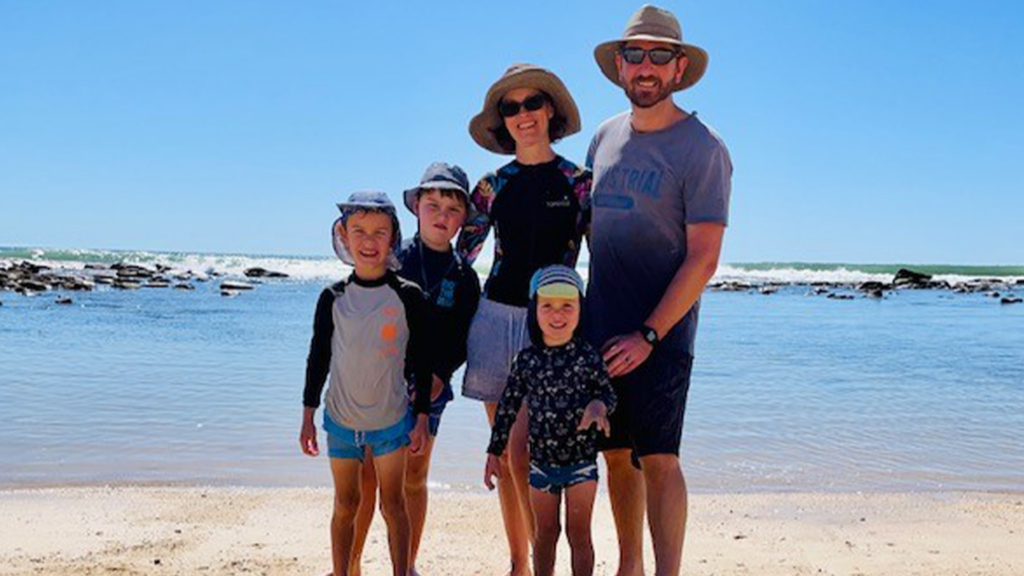
“We were really surprised when Elias was diagnosed, we had no idea he wasn’t hearing properly. He’d turn to our voices and respond when we talked to him, so it didn’t occur to us that his hearing was compromised.”
At three months old Elias got his first pair of hearing aids and at five months he started to come to Hear and Say.
“Initially we were seeing specialised speech therapist each fortnight, these appointments became monthly as he got a bit older. We also attended the infant and parent group, Listen Little Stars and progressed to the LEAP playgroup when Elias was nearing two,” said Rachel.
“We also saw an occupational therapist at Hear and Say when Elias was two years old to check that his balance and motor skills were developing as expected.”
These services have made a difference to Elias and his whole family.
“We’re so grateful for the services and support offered through Hear and Say, it has made an enormous difference for Elias and our family,” said Rachel.
“We've been able to maximise Elias's listening and speaking, because we've had access to skilled, knowledgeable, and experienced speech therapists,” she said.
“Elias often tells his friends and our extended family members about ‘my Hear and Say’ and shares his many wonderful experiences at LEAP.
“He doesn’t know many local children who have hearing loss and attending Hear and Say normalises wearing hearing aids, he plays with other kids that have hearing loss and wear hearing aids or implants,” she said.
Reflecting, Rachel says that their decision to make sure Elias could hear felt like the right option to do for her family.
“Since Elias is the only person in our family with hearing loss (besides older relatives), and because his loss is sloping, it was natural to connect him with the world of sound through specialised speech therapy and audiology services.
“We also knew that developing listening and speaking skills would offer him the greatest number of opportunities to play with friends, take part in sports, and school activities, as well as jobs and hobbies when he’s older,” said Rachel.
It’s no mean feat to support a child with hearing loss as they learn to hear and speak, it takes professional support and most importantly these outcomes rely on families and parents like Rachel as their child’s primary teacher.
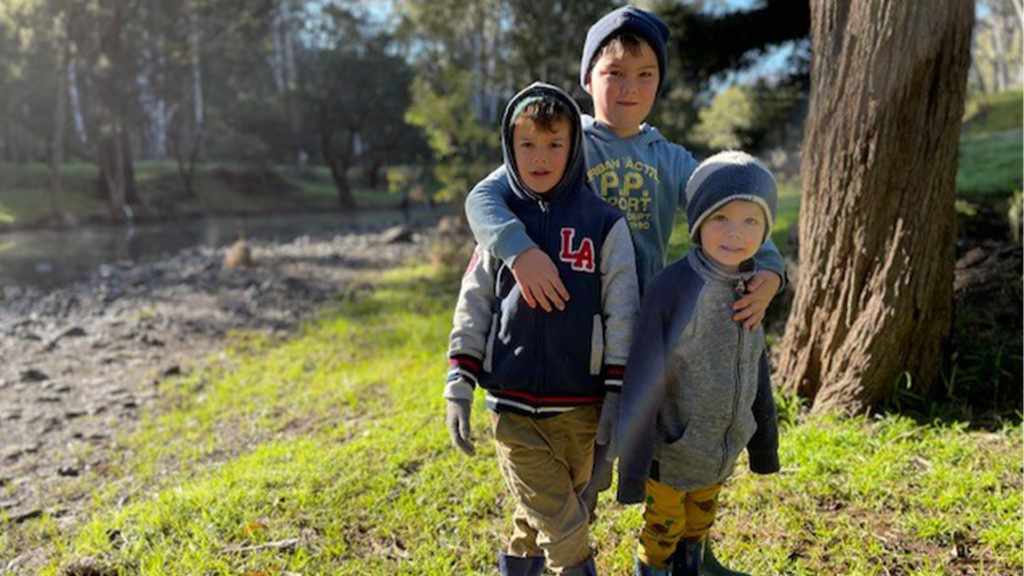
“Early intervention has meant that his speech and language skills are at the same level as children without hearing loss,” said Rachel.
“We often have friends and family comment that you'd never know he had a hearing loss if he wasn't wearing hearing aids.”
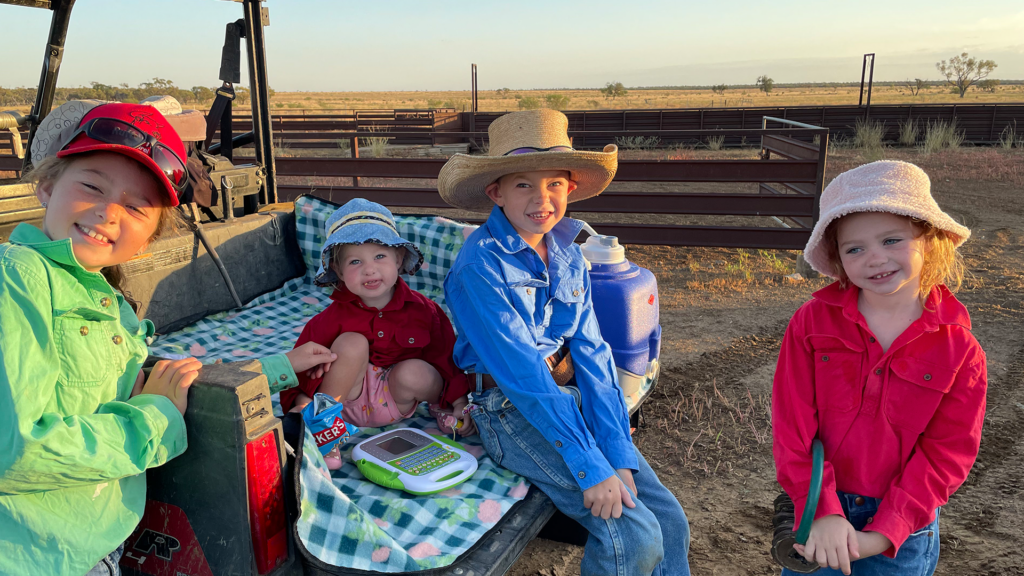
Enthusiastic Loud Shirt Day and Loudest Town participants Kerryn and Sam from the small town of Aramac, 120 kilometres west of Longreach, are again making plans for this year's Loud Shirt Day – slated to be the biggest yet!
All for a cause close to their hearts, nine-year-old Emily was diagnosed with profound hearing loss in her left ear and moderate-to-severe loss in her right ear at birth.
The diagnosis came as a surprise to parents Kerryn and Sam, as they had no family history of hearing loss and no troubles during pregnancy.
“Sam and I were in denial for the first couple of weeks, thinking maybe the machine wasn’t working properly or her ears were just blocked,” said Kerryn.
“It wasn’t until we travelled to Brisbane when she was about three weeks old and spoke to an audiologist at the hospital that it actually sunk in,” she said.
“For two new parents from the bush to travel 1,200km away from our home and family to seek answers was very daunting.
“I can still remember those first couple of months so clearly – it was a whirlwind of appointments with many different specialists and so much information to absorb.”
When Emily was about four months old, she was fitted with hearing aids and at one year old she had her first cochlear implant surgery. In 2021 Emily had her second cochlear implant surgery as her hearing aid in her right ear was no longer enough.
Emily sees Hear and Say fortnightly for specialised speech therapy sessions via telehealth, and travels to the Townsville and Brisbane centres for audiology services.
“Her speech and language blows us away every day. Her reading and writing is immaculate and she loves to learn,” said Kerryn.
“It’s been a long road, but we are so proud of how far Emily has come and we are confident she has an amazing future ahead of her,” she said.
“Living in a rural area has certainly been a huge challenge with the distance we need to travel, and the cost involved with that. The feeling of isolation, especially in the early years was very hard, however we got through the other side by sticking together.
“One of the hardest things was travelling away by myself as Sam had to stay at home to keep working and, as our family grew, he needed to stay at home to care for our other kids.”
Kerryn, Sam and their family are grateful for Hear and Say’s support and are some of our most enthusiastic Loud Shirt Day supporters – jumping back on board to fundraise for the fifth year in a row!
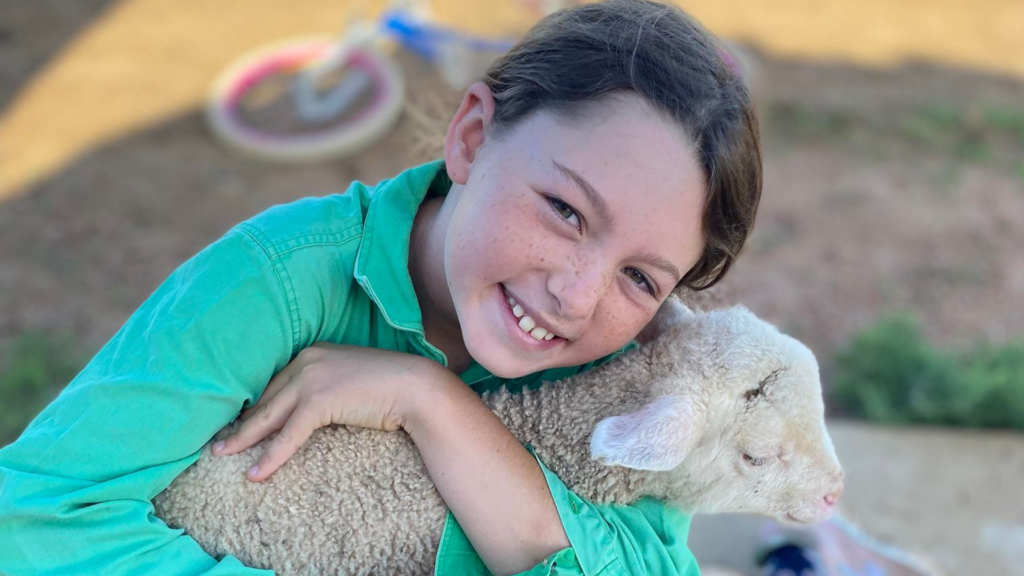
“Hear and Say have also been a huge support to our family, especially living in a rural area. The speech and language skills Emily has learnt from her specialists is something we will be forever grateful for. It has made a huge difference already, especially as Emily transitioned into mainstream school at the start of her Kindy year in 2017,” said Kerryn.
Not only do the family take part in Loud Shirt Day but were were awarded the title of Queensland’s Loudest Town competition for 2022 – raising almost $30,000, with plans to make 2023 their biggest year yet.
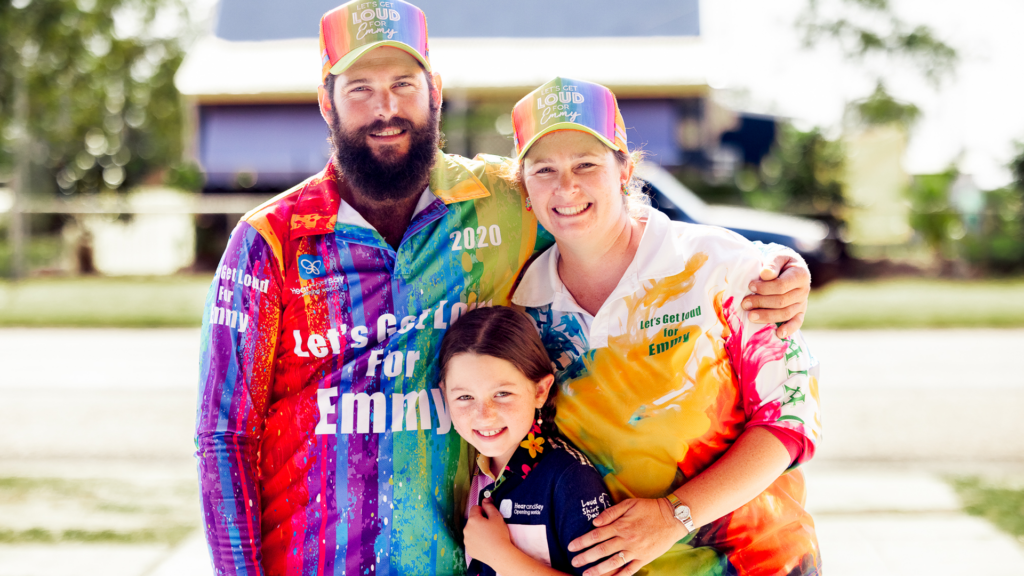
“We’re very excited for this year’s Loud Shirt Day, there will be lots of activities happening,” said Kerryn.
“For the first time in 2022, all gate entry fees from the three-day Ballyneety Rodeo were donated towards Aramac’s Loudest Town campaign, we had new custom-designed loud caps, and our Let’s get loud for Emmy fishing shirts. We’ll also hosted our annual BBQ breakfast on the main street of Aramac that featured another raffle,” she said.
“Loud Shirt Day is all about repaying the kindness we’ve experienced at Hear and Say by raising as much as we can. We hope that Aramac’s contribution can make the lives of other families affected by hearing loss that little bit easier.
“To anyone that is even considering getting involved in Loud Shirt Day – please just do it! It’s something that you would never regret. It’s not something that you have to do on your own either. Hear and Say are there every step of the way.”
Townsville twins Marley and Sienna share a love of swimming and gaming. Now 10-years-old and attending their local school, both girls have great aspirations for their futures.
Marley wants to be a veterinarian and Sienna has her eye on both an interior designer and acting.
The sisters both have hearing loss caused by Large Vestibular Aqueduct Syndrome – a condition which affects the formation of the inner ear.
In June 2022, Marley and Sienna shared the experience of having a cochlear implant turned on for the first time. While they both now wear these hearing devices, their journeys with hearing loss have looked different up until this point.
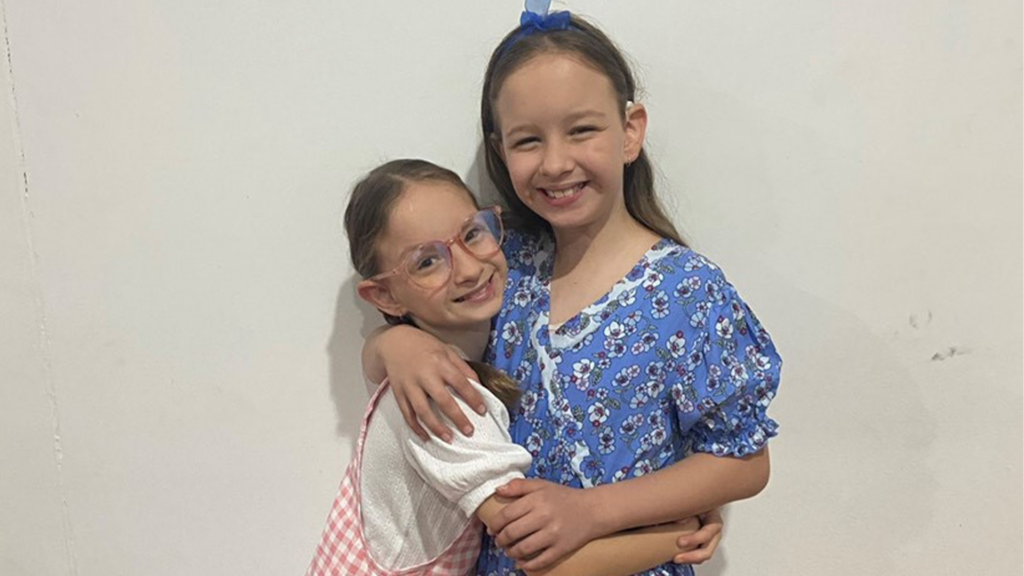
Sienna
“Sienna was diagnosed with mild to moderate hearing loss at birth which was picked up via the newborn screening test done at the hospital,” said Hayley, the twins’ mum.
“She was initially fitted with hearing aids however her hearing gradually deteriorated over the years,” she said.
“In June 2020, Sienna received her first cochlear implant in her left ear. She was so excited for her switch on, I remember her saying she couldn’t wait to be able to hear what the other kids hear.
“It was honestly a surreal moment, from Sienna growing up with hearing loss, and then for her natural hearing to slowly deteriorate as she got older to reaching the point of a cochlear.
“I remember feeling sad we had reached this point but also so happy that she’d have the opportunity to be able to hear.
“Whilst it was an uphill battle getting Sienna used to wearing her cochlear at first, with moments of her refusing as she was struggling to get used to ‘the beeps’ and that was hard.
“This was especially heightened since she received her first implant during the 2020 COVID-19 lockdown and remote learning from home.
“Looking back now, it was the best decision for Sienna and the progress she made from her first implant to now is nothing short of amazing. She has put in all of the hard work and it’s paid off for her.”
Marley
“Marley was diagnosed at nine years old with severe to profound sensorineural hearing loss in her left ear and a moderate rising to normal hearing loss in her right ear.
“In fact, Marley’s testing on her left ear was inconclusive for a period of time. She completed two Auditory Brainstem Response (ABR) testing sessions to diagnose her hearing loss in her left ear.
The double switch on
“Recently, Sienna received her second cochlear (in her right ear) and Marley was fitted with her first cochlear implant on her left ear and she wears a hearing aid on her right.”
With no family history of hearing loss Hayley was saddened when Sienna was born with hearing loss, and when they found out about Marley’s diagnosis later on.
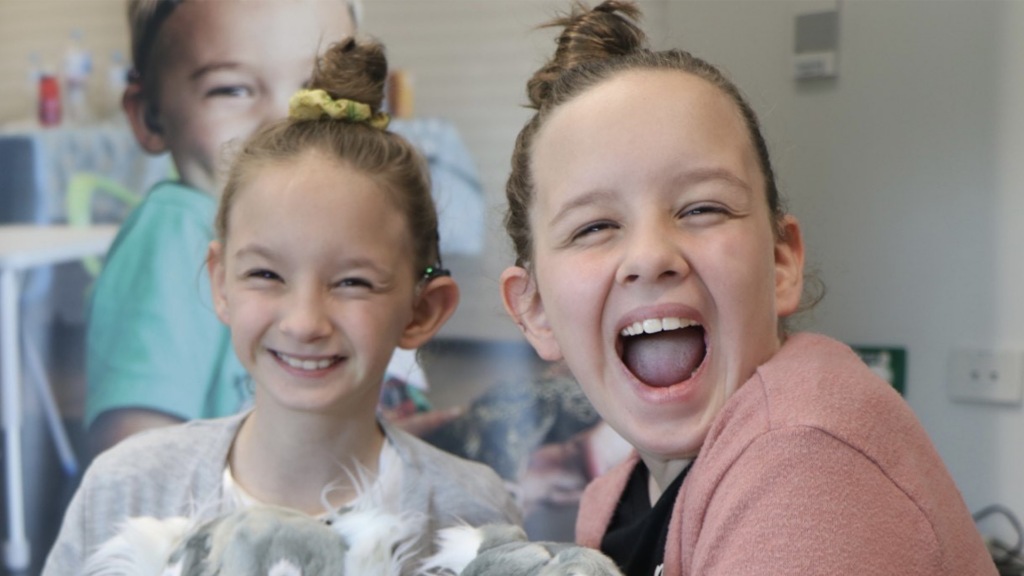
“We moved to Townsville from Melbourne in January 2021 and we started Sienna in speech therapy at Hear and Say,” said Hayley.
“The support we have received from Hear and Say has been phenomenal – Marley and Sienna have received the best treatment, and they’ve helped us as a family navigate our way through the hearing loss world,” she said.
“We’ve learnt a lot and received helpful guidance. The entire journey with Hear and Say has been nothing but positive.”
Hayley looked ahead to the future, watching her twin girls grow up happy and with a life full of opportunity.
“I hope their futures are bright and happy. I want them to be able to have careers that they enjoy and that they are successful in whatever adventures they get into,” said Hayley.
“I hope they get to experience travelling to other countries and immerse themselves in different cultures and be able to spread awareness for hearing loss.”
Parents Jess and Nick passionately raise awareness and funds so children who are born deaf can hear and speak, just like Will and Edie.
Three-year-old Will, loves playing in the sandpit with trucks and diggers, exploring outside and playing with his friends at the park. Will was diagnosed with profound hearing loss at birth.
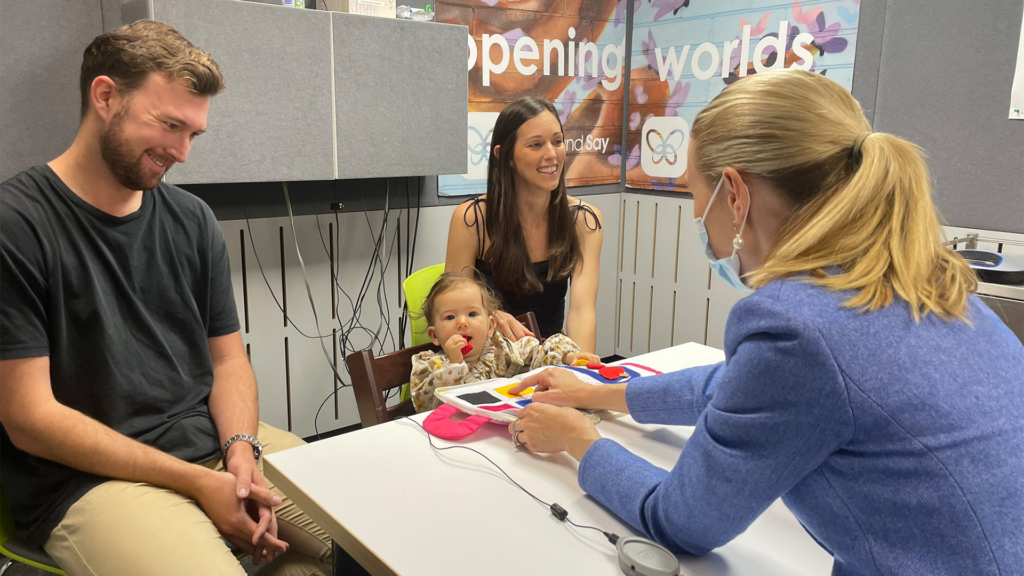
“We were utterly shocked – it took us completely by surprise,” said Jess.
“We were told about Hear and Say at the hospital after Will was referred on his newborn hearing screen and we first visited the organisation for his audiology assessment to confirm his diagnosis,” she said.
Will underwent cochlear implant surgery at 11 months old and comes to Hear and Say for regular speech therapy and audiology appointments.
“Hear and Say has made a world of difference for us. Our son has had access to early intervention which has allowed him to listen, talk, learn about his world and interact with his community,” said Jess.
“It’s been a rollercoaster of emotions but so incredible – Will amazes my husband and I everyday with the things he hears and can say,” she said.
“He is able to talk and listen just like his peers and for us, that's magic!”
In late 2021, Jess and Nick had their second child, Edie, who was also born with profound hearing loss.
“Again, I was shocked. We knew there was a chance of Edie being born with hearing loss however I was still baffled when we got her diagnosis,” said Jess.
“In some ways it's been easier the second time around. We knew what to expect and what the potential outcomes were from therapy and the use of technology,” she said.
“She has been diligently wearing her hearing aids and we have been going to speech therapy to work on early listening skills and social skills.
“She is doing really well – we love hearing her babble!”
Jess and Nick are back on board for their third Loud Shirt Day fundraising event this year, and said it’s all pretty simple to get started.
“2020 was our first year being involved, and it was very easy to get set up. We started by creating a Loud Shirt Day fundraising page online, and then sent the link out to our friends and family through social media,” said Jess.
“Loud shirt day is a fabulous campaign for a great cause that’s very close to my family’s heart,” she said.
“We feel touched when our friends and family support Hear and Say as we know first-hand where the funds go and the impact it can have on a child’s life. We are forever grateful for the support of Hear and Say.”
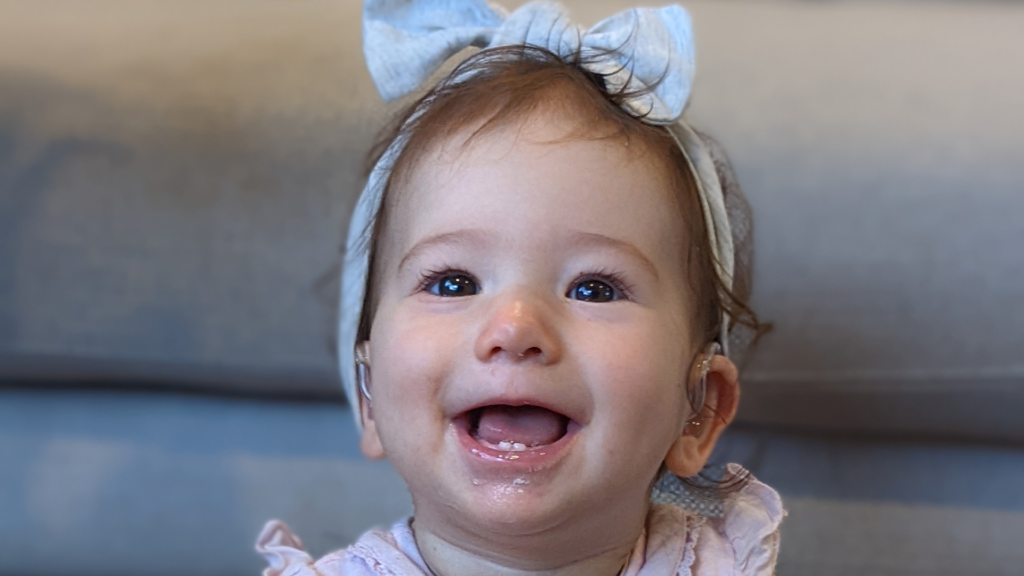
When we asked Jess and Nick their three tips to anyone taking part in Loud Shirt Day, they said…
- Create an online donation page and get loud on Loud Shirt Day
- Get active on social media
- Rally your friends and family and ask them to share your story to expand your network
“We’re so excited to see Willow develop her speech with the beautiful gift of cochlear implants.” – Ami, mum to two-year-old Willow.
Willow lives on the Gold Coast with her mum Ami and dad Jesse, and her weeks are filled with lots of her favourite activities and people.
“Willow loves to dance, run on the beach, draw, sing in the car to her favourite songs, paint and she especially loves playing with her cousins,” said Ami.
Shortly after she was born, Willow was diagnosed with hearing loss in both ears – picked up through the newborn hearing screening.
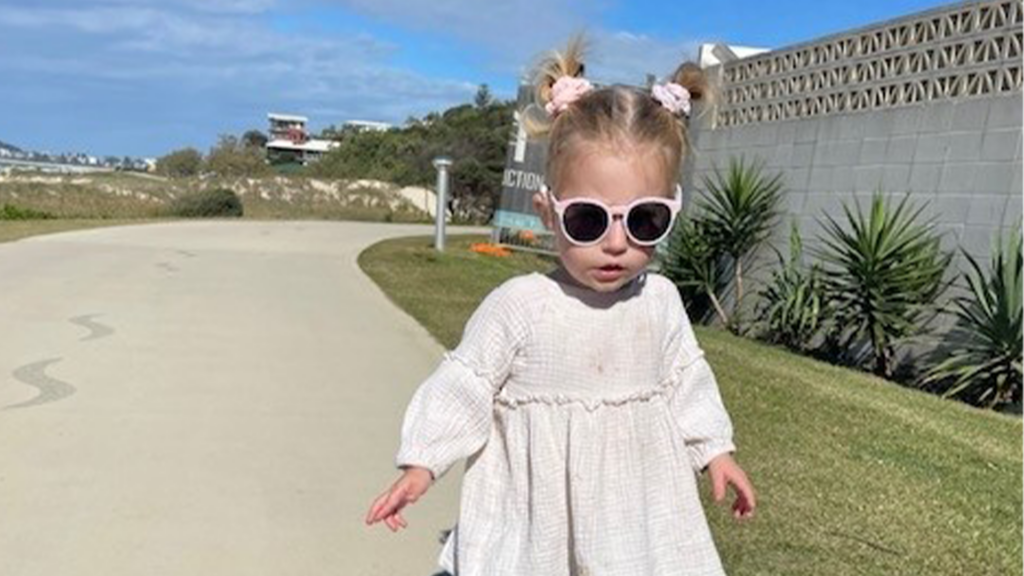
Willow was born with cytomegalovirus (CMV) which meant her hearing loss declined throughout her first few months and at around seven months she was diagnosed with a profound loss.
“We felt extremely overwhelmed with so many different emotions, and we were just in overall shock. We had no history in our families of hearing loss, so we both felt a bit lost in a way,” said Ami.
During this whirlwind time, thanks to the power of social media and the kindness of their networks Ami and Jesse found out about Hear and Say.
“We were lucky enough to have a beautiful family reach out to us over Facebook, they told us all about Hear and Say. Their daughter received services there and they highly recommended we get in touch with their lovely staff,” said Ami.
Willow started to come along to Hear and Say, having speech therapy lessons and then at 10 months old, she got a cochlear implant.
“Hear and say have been our rocks through Willow’s hearing journey, they supported us through speech therapy, audiology and have always been there to answer any questions or concerns we had. They have been exceptional in every way, and we’d feel so lost without them,” said Ami.
For parents, it can be a big challenge to keep hearing devices on their child as young children tend to pull them off quite often.
“We’ve had many ups and downs with Willow going through stages of wanting to wear her cochlear implants and then not wanting to wear them,” said Ami.
“With help from Hear and Say and our amazing speech therapist Greer, we have learnt so many great ways to engage Willow to wear her cochlear implants and do therapy in fun ways at home,” she said.
Teaching a child with hearing loss to learn to hear and speak really is a journey that involves the whole family and Ami is excited to watch her daughter grow, learn and have unlimited opportunities.
“Willow is really loving the process with learning to listen, hear and speak and she has made such incredible progress,” said Ami.
“Early in her cochlear implant journey, Willow couldn’t focus on environmental sounds like birds, aeroplanes and cars. Now when she hears a plane fly over, she points and pretends to be one.
“We want to give Willow as many opportunities in life as we can and being able to hear and speak will benefit her in so many ways.”
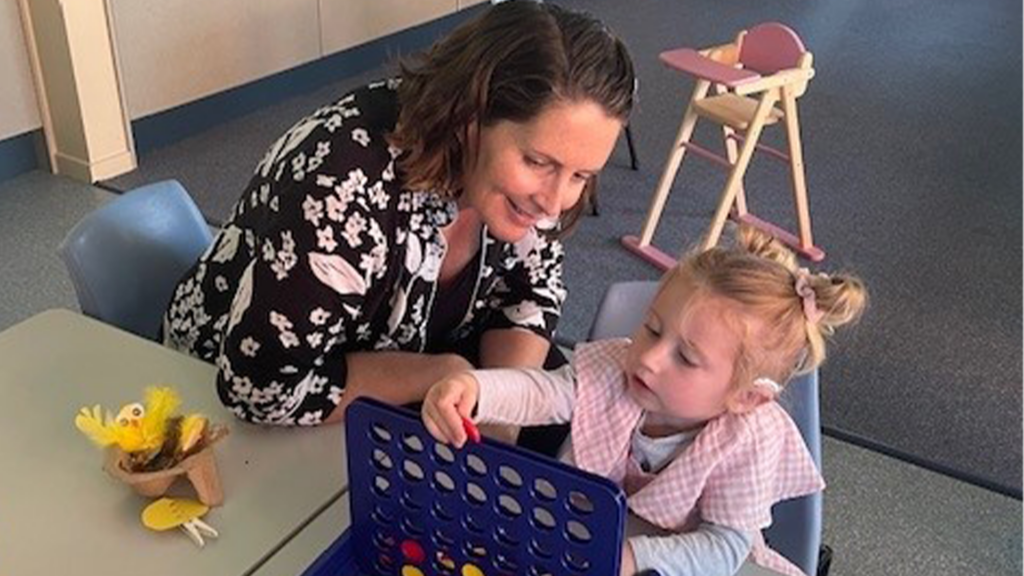
“He’s an active, funny, sporty likeable kid who just happens to have a hearing loss. He doesn’t let his hearing loss stop him from achieving what he wants to.” – Rosie, mum to 11-year-old Will.
Having passed his newborn hearing screen, Will was diagnosed with hearing loss at about nine months old.
“As Will was hitting the usual milestones for his age in terms of babbling, I expected him to pass the follow up testing,” said Rosie.
“Because of our family history of hearing loss, Will was scheduled to have six-monthly hearing tests until he was three. His older brother Lachlan passed these tests so I expected Will to as well,” she said.
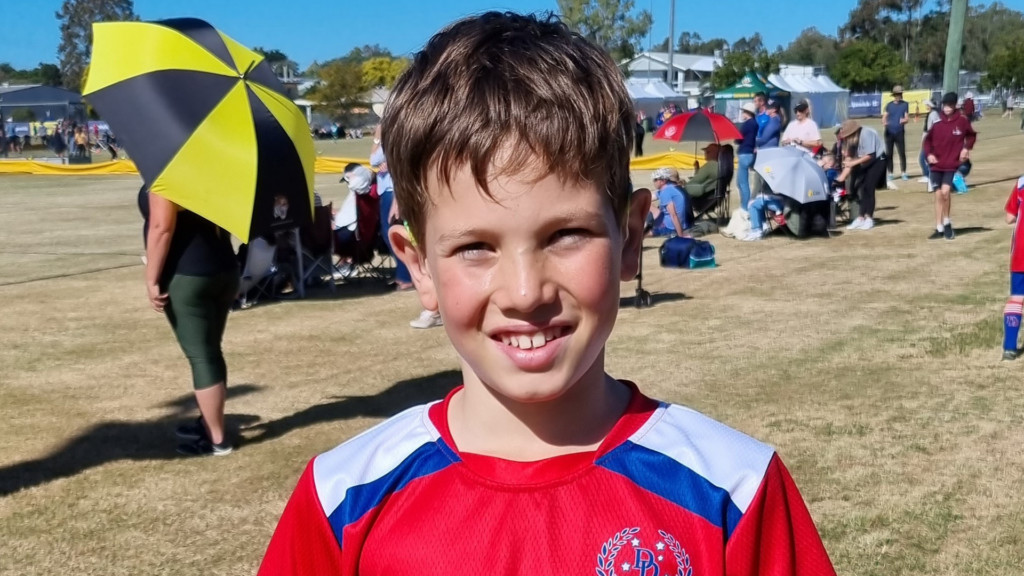
“I was actually quite shocked to hear Will had a hearing loss and I cried for about two weeks. I was sad for Will, worried about what his future would hold and how much his hearing loss would affect his daily life. I was also worried about how it would affect us as a family in terms of the services and support we’d need to access to help him.
“I was concerned he would be judged and teased and just didn’t want this for my little boy.”
Will was fitted with hearing aids in 2012 and the family met Hear and Say’s team in Townsville, starting telehealth speech therapy in 2013.
“It was difficult at first as we felt alone and isolated, living in Townsville away from family and not knowing anyone with a child with hearing loss. We didn’t really know what lay ahead,” said Rosie.
“Once we started regular lessons with Hear and Say, we had the opportunity to meet with Will’s speech therapist in-person, as well as other families, when we visited the Brisbane centre a couple of times a year.
“We had weekly, and then fortnightly lessons until he finished Prep. They were so engaging and catered to Will’s interests which made a huge difference.
“Hear and Say provided a wonderful service for Will but also for Andrew and I as parents to help Will outside of his lessons.
“Through Hear and Say, we had access to amazing therapists as well as a support network of other parents of children with a hearing loss. It meant we didn’t have to feel alone and Will also knew there were other kids out there just like him.”
In 2017 Will started school in Warwick, who were supported in ensuring that Will didn’t miss out on anything his hearing peers could hear.
“This was one of my early fears so I was so grateful they were on board from the start. Will’s hearing loss has been part of his school journey and the kids in his class have always been accepting of it. They even used to remind the teacher that the Roger FM was on mute!” said Rosie.
Now 11 years old, Will loves to spend time outdoors riding motorbikes, camping, going to the beach and hanging out with his friends. Will also loves to play hockey, cricket, touch football and athletics at school. He loves listening to music and watching the football as a mad North Queensland Cowboys supporter.
“I love that he can communicate verbally (even though he’s a little shy!) and that he has an interest in music,” said Rosie.

“Will overcame his shyness recently taking part in the school Choral Verse Speaking group that competed at the district eisteddfod and won their category,” she said.
“I am so proud of him for taking that step and overcoming his fear of speaking in public.
“We are so appreciative of the support of the amazing donors and benefactors who have supported Hear and Say to allow us to take part in the extra opportunities. We are so grateful for Dimity and her foresight in starting Hear and Say three decades ago so that kids like Will are able to achieve wonderful things.”
“I love being able to hear and wouldn’t have it any other way. I’ve always felt and believed that my disability doesn’t define me, it’s only a part of me, and has contributed to who I am today.” – Ruby, 19 years old.
Ruby is the oldest of three, studying a diploma of photography and photo imaging and has a myriad of creative hobbies.
“I love cooking, especially baking, it brings me so much joy. I love creating my own recipes and learning about different cuisines,” said Ruby.
“One of my main hobbies is photography, it’s one of my favourite things to do. I love the creativity and fun of it, the different ways I can use my lighting, perspective and focus on the smaller things in life.”
Ruby was born before the Universal Newborn Hearing Screening was implemented and was diagnosed with profound hearing loss at six months old.
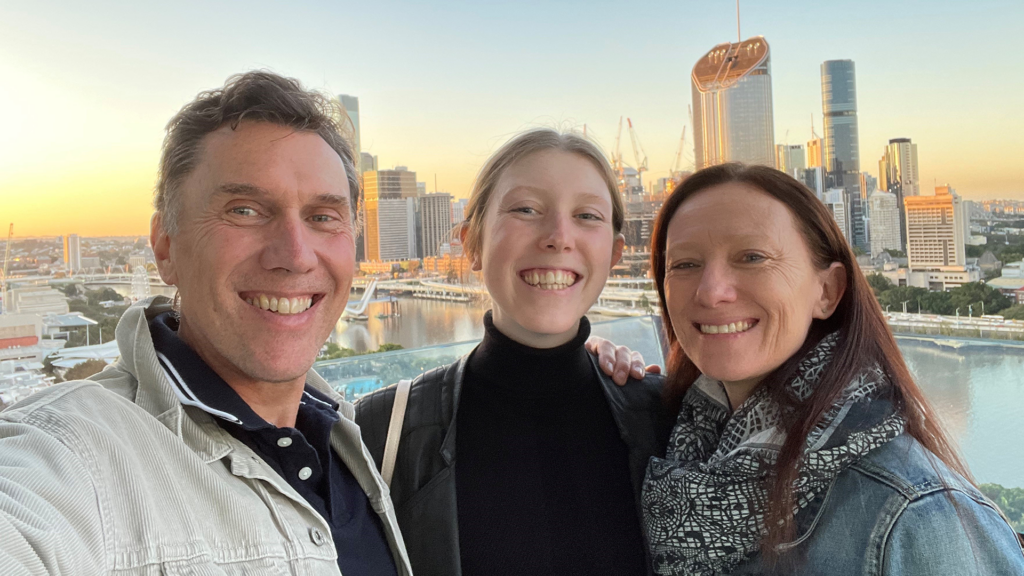
“My parents often tell this story as one of the most important and life-changing memories they’ve had,” said Ruby.
“When I was six months old they came into my bedroom, I was sitting up in my cot facing away from them. They came in all excited to see me but when I didn’t turn around to their calls they knew something wasn’t right,” she said.
“My parents went to multiple specialists and GPs and it was when Dr Dimity Dornan AO called that our lives changed forever. Dimity told them that it was possible for me to hear and to learn to listen and speak. My parents met with Dimity later and never turned back.”
By the time Ruby was one year old she was learning to listen through her cochlear implant on her right side. At this time babies with hearing loss on both sides only received one cochlear implant. As further research came out about the benefits of hearing through both ears, this process changed. When Ruby was four years old she got a cochlear implant on her left side too.
“Today I go to Hear and Say every six months for a new program for my cochlear implants and every 12 months for assessments,” said Ruby.
“As a young kid I attended Hear and Say’s playgroup where I met amazing friends who are just like me. We built a wonderful friendship group, and this is something I will have forever.
“Hear and Say also had the most amazing opportunities to attend workshops for all ages in the school holidays. I cannot recommend these workshops enough, they have helped me grow as a person, meet new people, and build tighter bonds with the friends I made through these workshops.
Looking back on her school experience Ruby says it wasn’t always easy but is thankful for the people who helped her along the way.
“Despite having bilateral cochlear implants, I still struggled at school. It was huge, doing six hours a day of non-stop listening, concentrating, socialising, and trying to ensure I didn’t miss anything,” said Ruby.
“I struggled with friends and feeling like I didn’t totally fit in, it was hard to keep up with conversations in a busy playground or in a noisy classroom with lots of people talking at once,” she said.
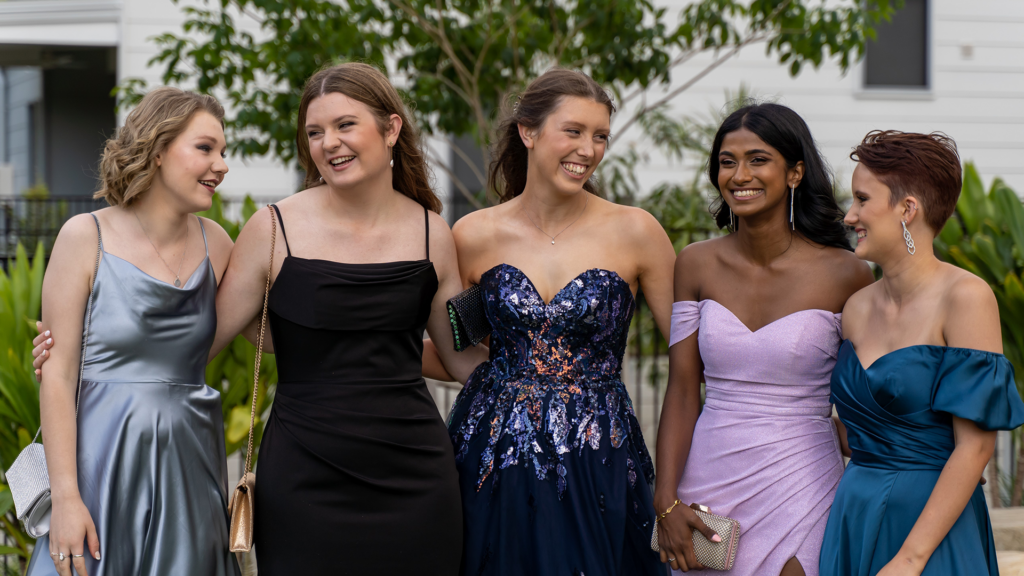
“Although these were challenges, there were more highs than lows and I had the most amazing teachers who did everything they could to help me.
“The most important thing I did was to introduce myself to my teachers and explain my hearing loss, the challenges I go through and strategies to help me,” said Ruby.
From the classroom to the stage, to the pool – Ruby was right there with her siblings and friends.
“As a kid I did dancing, including ballet and jazz and I absolutely loved it,” said Ruby.
“I also really enjoyed swimming and did it for a long time. When the aqua ear came out, I loved it even more, hearing the water move as I did each stroke. When I first tried this new accessory that allowed me to wear my cochlear implant in the water, I distinctly remember saying to dad, ‘the water has sound! I can hear the water!’.”
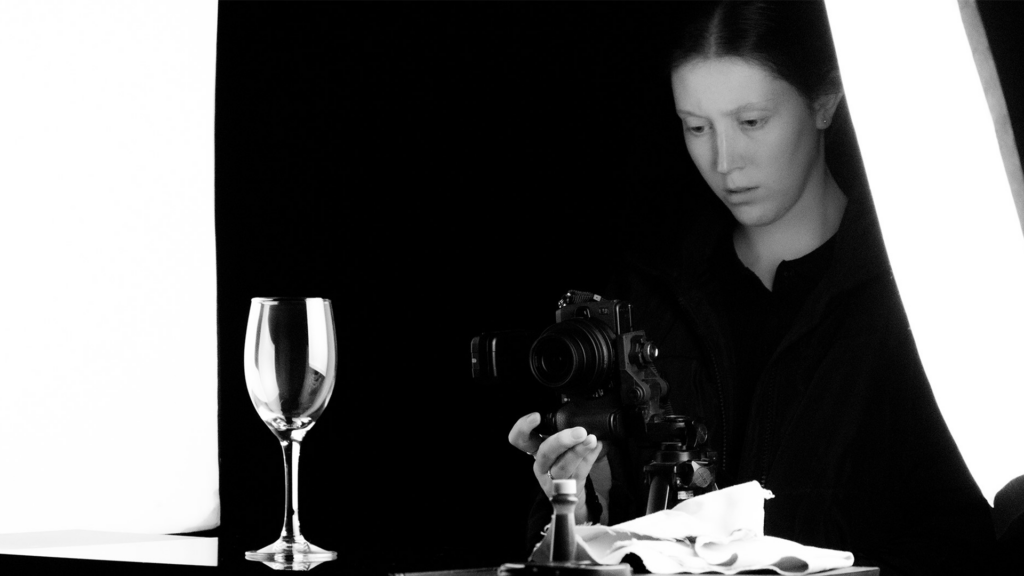
After reflecting on her journey so far there are many things that continue to amaze Ruby, like her ability to pop on her cochlear implant processer and hear the world, or the fact that all those years ago her parents received a life-changing phone call.
“I don’t know where I would be today if Dimity hadn’t called my parents or created such an incredible foundation for kids to have every opportunity they deserve,” she said.
Looking ahead, Ruby shares her advice to parents who have just found out their baby has a hearing loss.
“This new chapter is a tough and scary beginning but there are so many opportunities you can create for your child. They do have the ability to learn to listen and speak, go to their local school, make friends and be a kid,” said Ruby
“They can be anyone they want to be.”
Elspeth is a four-year-old who is thriving at pre-prep, but it has been a journey for her and her family to get to this point.
Her weeks are filled with dancing, swimming, trips to the beach and rainforest explorations.
“Elspeth is our little mermaid who loves the water or playing in the sand. She can draw or colour-in for hours on end and enjoys playing make believe with her brother,” said Amy, Elspeth’s mum.
Today Elspeth has hit her stride but her parents reflect on the many steps taken to get to this point.
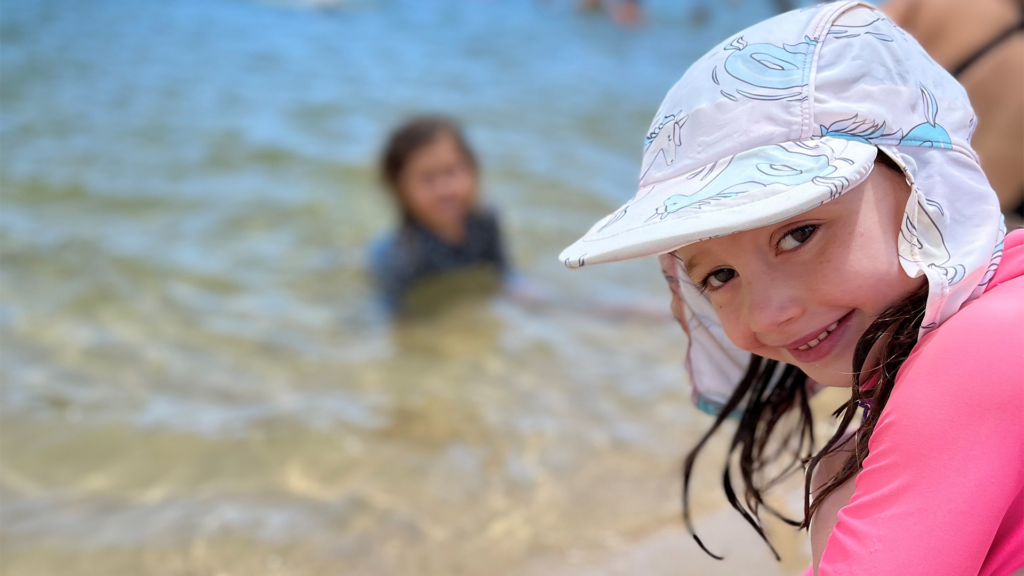
While pregnant with Elspeth and on holiday in Melbourne, Amy and Alastair were suddenly faced with the emergency caesarean birth of their baby girl.
Delighted to meet their beautiful baby girl, it was also a difficult start for the young family. Elspeth was born with two rare conditions known as microtia and atresia, which affect the formation of her ear and ear canal as well as hearing.
“When Elspeth was born, it was immediately obvious that something was wrong with her ear.
At the time we didn’t know exactly what this would mean for her and our family, but we knew about the incredible outcomes possible for children with hearing loss as both Amy and I work in medical professions,” said Alastair.
After finding out about their daughter’s hearing loss, Amy and Alastair were determined to do everything to give Elspeth the support she needed to help her learn to hear and speak. Upon returning to Queensland they turned to Hear and Say in Toowoomba, where they were living at the time.
At three months old Elspeth was fitted with a Bone-Anchored Hearing Aid (BAHA) on her right side which used vibrations to transfer sound directly to the cochlear.
“Being able to hear means Elspeth can participate in group activities and build social connections as she starts her education,” said Amy.
“Hear and Say has made a huge difference for us, from teaching us as parents how to communicate well with Elspeth, to providing language and listening strategies for her,” said Alastair.
After the family made a sea change, Elspeth started going to fortnightly sessions at Hear and Say on the Gold Coast to continue to develop her listening and speaking skills and early literacy.
Her school has also installed a Roger sound system in her classroom to ensure she has access to sound to enhance her education.
“Elspeth is smashing her speech and language goals and her confidence is soaring,” said Amy.
Thanks to hearing technology and specialised speech therapy Elspeth’s ability to hear and speak means she can have a special relationship with Amy’s parents who live interstate, they regularly talk on Skype.
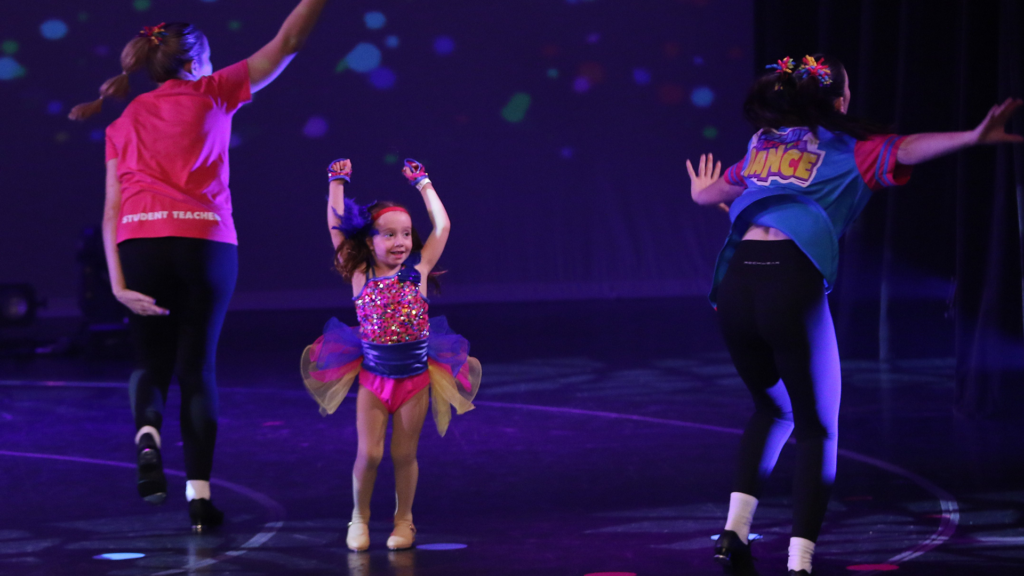
“It is so important to me that both my kids have a relationship with my parents, and I am so grateful that modern technologies and services have made this possible,” said Amy.
“As parents, Hear and Say has equipped us with all the tools to ensure Elspeth continues to thrive.”
“Elspeth has developed her language skills wonderfully. I always say to people that her hearing loss is not a limiting factor in her success at school or anywhere else in life,” said Alastair.
He was right! Elspeth’s progress is nothing short of amazing.
ABN 32 058 430 069
Acknowledgement of country
We acknowledge the Traditional Custodians of all the lands on which we meet, work and live, and pay our respect to Elders, past, present and emerging. We respect their continuing culture and the contributions Aboriginal and Torres Strait Islander peoples make through their resilience and strength.
Privacy Policy | Accessibility Statement
Copyright © 2024 – All Rights Reserved
29 Nathan Avenue, Ashgrove Qld 4060 ABN 32058 430 069
Acknowledgement of country
We acknowledge the traditional custodians of all the lands on which we meet, work and live and recognise that this land has always been and always will be Aboriginal and Torres Strait Islander land.
- Privacy Policy
- Contact Us
- Copyright © 2024 - All Rights Reserved



